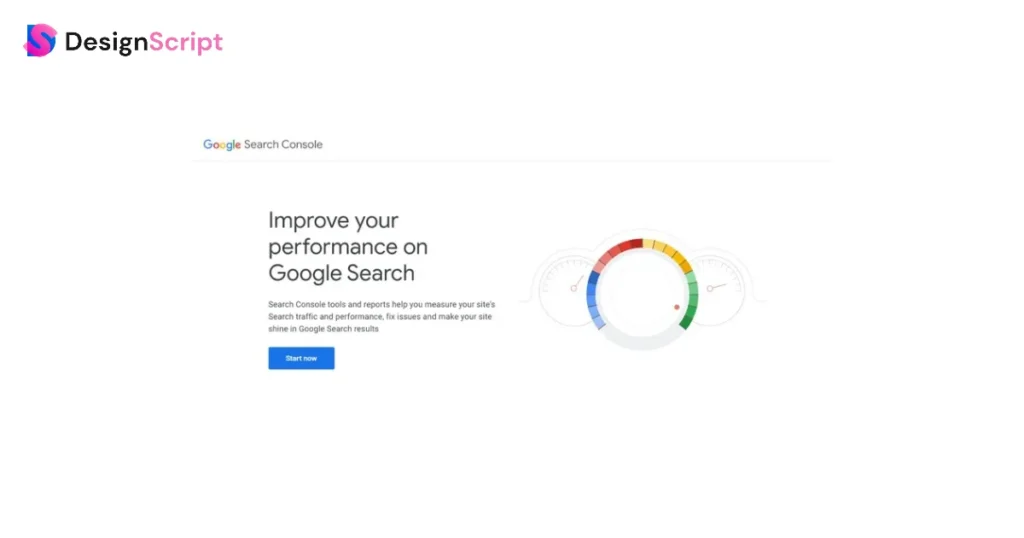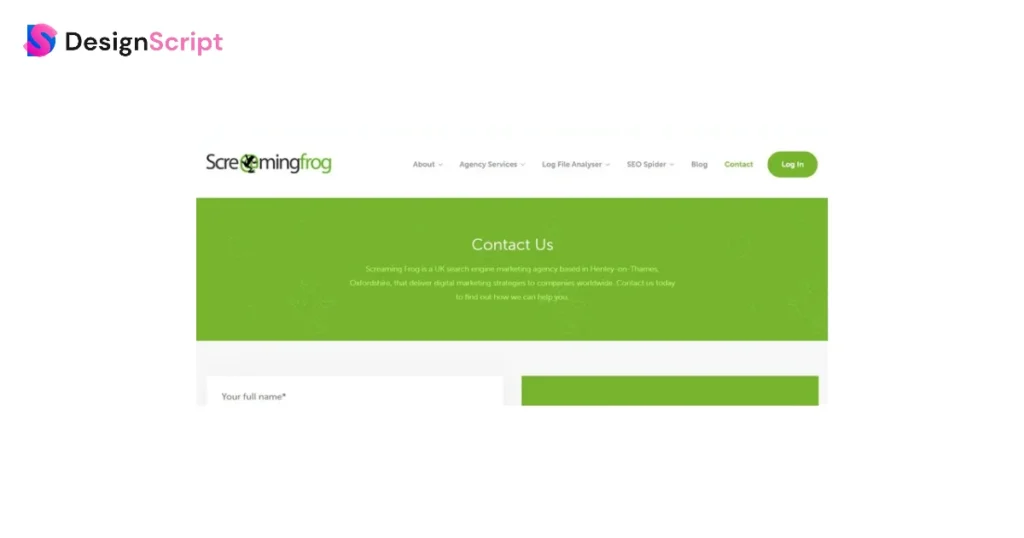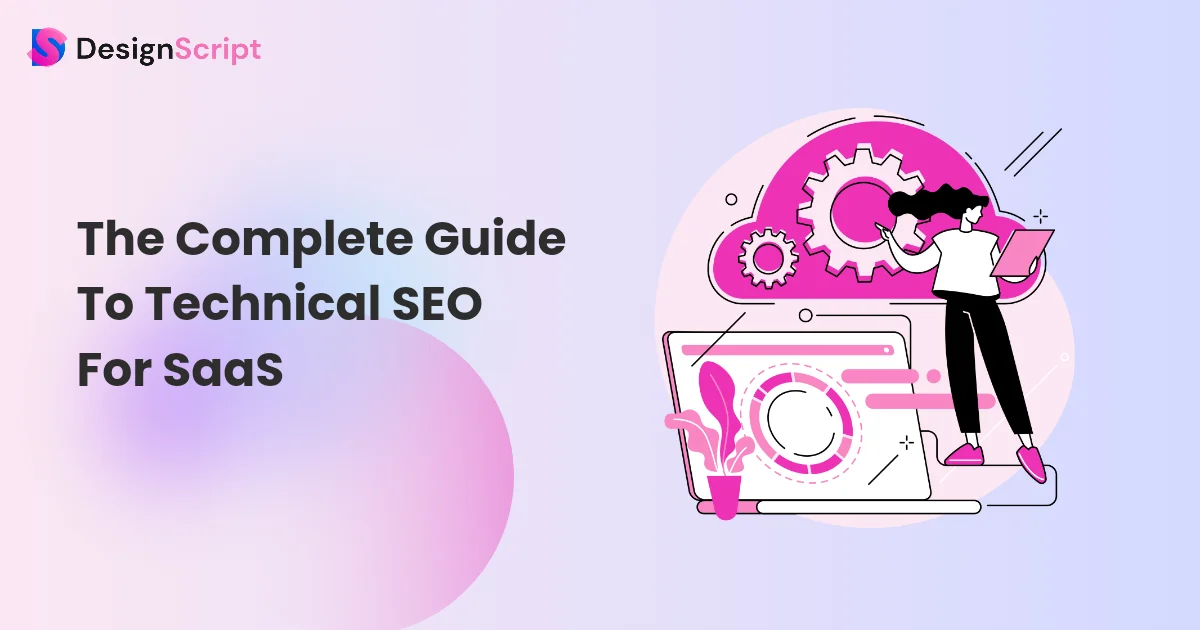Technical SEO for SaaS: Boost Rankings with Expert Tips
Is your SaaS website struggling to attract organic traffic despite offering a stellar product? To put a figure on it, the SaaS industry is expected to increase at a rate of 7.89% each year, which has sparked intense competition everywhere. The culprit might be hidden beneath the surface – in the world of technical SEO for SaaS. Don’t worry, you’re not alone. Many SaaS technical SEO companies ignore this important part. This leaves potential customers stuck in the search engine jungle.
This comprehensive guide is your key to open the secrets of effective technical SEO for SaaS. We’ll help you optimize your website for user experience by converting ideas into accessible, doable actions. By the time it’s all through, you’ll have the skills and resources to establish a solid basis for organic expansion, taking your SaaS business to unprecedented heights.
So buckle your seatbelts, take out your conceptual flashlight, and join me as we explore the fascinating—and occasionally complex—world of technical SEO for SaaS!
Table of Content
- What Does Technical SEO for SaaS Companies Involve?
- How Important is Technical SEO?
- Benefits Of Optimizing Technical SEO For SaaS Websites
- Basics of Technical SEO
- Content-Related Optimizations
- Effective SaaS Technical SEO Checklist
- SaaS Technical SEO Audit Action Plan
- Best Tools For Technical SEO Optimization
- Your SaaS Website’s Launchpad to Success
- FAQs
What Does Technical SEO for SaaS Companies Involve?

Technical SEO for SaaS companies goes beyond fancy fonts and flashy buttons. It’s about building a strong foundation that search engines and users love. Imagine search engines like explorers – they crawl your website, go through its structure and content. If things are messy, they get lost and miss valuable pages. Technical SEO for SaaS ensures your site is well-organized and easy to navigate for explorers and visitors.
This involves elements like:
- Speed: Search engines and users hate waiting. Optimizing website speed helps you rank higher and keeps visitors engaged.
- Structure: A clear hierarchy makes it easy for search engines to recognize your content and users to find what they need.
- Mobile-friendliness: Everyone uses smartphones nowadays. Ensuring your site looks and works perfect on every device is crucial.
- Content: While technical, it’s not just about code. Optimizing titles, descriptions, and images helps search engines understand your content. It also helps rank it for relevant searches.
Mastering these technical aspects creates a smooth experience for search engines and users. Ultimately, this attracts more organic traffic and boosts your bottom line.
How Important is Technical SEO?

Imagine trying to navigate a maze blindfolded. That’s what search engines do when encountering poorly optimized websites. Here’s why it’s crucial:
- Search Engine Visibility: If bots can’t find and crawl your pages, they won’t rank them. Technical SEO removes roadblocks like broken links and slow loading times, making your website discoverable.
- Higher Rankings: Search engines like Google reward websites that offer a smooth user experience. Technical SEO maximizes important ranking signals like page speed and mobile friendliness.
- Improved User Experience: A technically sound website is fast, user-friendly, and error-free. This translates to happy visitors who stay longer, engage more, and convert better.
- Future-Proofing: Search engine algorithms constantly evolve. By focusing on technical SEO best practices, you build a website that adapts to changes and remains discoverable in the long run.
While technical SEO might seem complex, it’s an investment in your website’s foundation. Think of it as setting the stage for your content to shine and attract the right audience.
Benefits Of Optimizing Technical SEO For SaaS Websites

Optimizing your SaaS website’s technical SEO for SaaS can be a game-changer for attracting users and growing your business.
- Climb the Search Ladder: Strong technical SEO helps search engines crawl and understand your website, leading to higher rankings for relevant keywords. More visibility on search results pages attracts organic traffic and potential customers.
- Delightful User Experience: Technical SEO focuses on site speed, mobile-friendliness, and clear navigation. These elements create a smooth and enjoyable user journey, keeping visitors engaged and increasing the chances of conversion.
- Trustworthy and Secure: Technical SEO includes implementing HTTPS encryption, which builds trust and protects user data. Google also favors secure websites, further boosting your search rank.
- Content Gets Seen: An organized website with internal linking helps search engines display and index all-important content by distributing “link juice” evenly.
- Competitive Edge: Investing in technical SEO strengthens you against competitors with poorly optimized websites. Stand out in search results and attract high-quality leads.
Remember, consistent technical SEO for SaaS maintenance is key for long-term success. Optimize, track, and refine your website to attract, engage, and convert more SaaS technical SEO customers.
Basics of Technical SEO

Imagine your website as a majestic library filled with treasures of information. But what good is it if people need help finding it or navigating its twisting shelves? That’s where Technical SEO for SaaS comes in, acting as the architect, librarian, and mapmaker, ensuring search engines and users can effortlessly discover your valuable content. Let’s explore five key pillars of this crucial foundation:
1. Website architecture and navigation
Think of your website as a building. A well-organized layout helps people and search engines find their way easily. Use clear labels, link pages together, and add navigation to make it easy to move around and find what you need. Imagine a search engine bot exploring your website. A logical structure simplifies its understanding and indexing.
2. Mobile-friendliness and responsive design
In today’s world, overlooking smartphones is like shutting half your library patrons out. Make sure your website looks great on any screen and is easy to use on all devices. Responsive design is essential. It adjusts your website layout for the best viewing on all devices. Search engines prioritize mobile-friendly sites. This boosts your ranking with searchers.
3. Page loading speed and performance optimization
People prefer to avoid waiting in endless queues, and neither do search engines. Focus on fast loading times by optimizing images, minimizing code, and leveraging browser caching. Imagine a frustrated researcher abandoning your library due to slow, outdated computers. Similarly, slow loading speeds can make visitors bounce away, hurting your search ranking and engagement.
4. URL structure and hierarchy
URLs are like addresses, guiding users and search engines to specific pages. Keep them clear, concise, and descriptive, incorporating relevant keywords without keyword stuffing. Imagine confusing library labels that point readers in the wrong direction. Likewise, URLs need to be clearer to understand and navigation, impacting user experience and search engine ranking.
5. XML sitemaps and robots.txt optimization
An XML Sitemap is like a library catalog for search engines, showing what info you have and where to find it. Robots.txt helps protect your website, showing search engines which parts they can visit. Create accurate sitemaps. Optimize robots.txt. Ensure search engines find all content. Respect restricted areas.
Technical SEO is an ongoing process requiring regular monitoring and maintenance. By regularly evaluating and optimizing these five pillars, you build a strong foundation for search engine success, ensuring your website stands tall and welcoming, attracting users and search engines alike.
Content-Related Optimizations
In today’s digital landscape, where attention spans are fleeting and competition is fierce, crafting compelling content is more crucial than ever. But simply having great content isn’t enough. It needs to be easily accessible, engaging, and well-organized to truly resonate with your audience. That’s where content-related optimizations come in. They’re the secret sauce that transforms good content into remarkable experiences.
1. Optimize Readability

Imagine pouring your heart and soul into a blog post, only to have readers stumble through it due to complex sentence structures, jargon overload, or excessive technical terms. Readability is essential, and optimizing for it is easier than you might think. Use shorter sentences, active voice, and clear language. Break up long paragraphs with images, subheadings, and bullet points. Aim for a reading ease score in the 70s-80s range, indicating content easily understood by most high school graduates. Remember, you’re writing for humans, not robots!
2. Fix Broken links and Resources

Imagine clicking on a link that says it has helpful information, but you see a “404 Not Found” error instead. Broken links and resources can mess up how users feel and trust you. Regularly check your website’s links. Use tools like Screaming Frog or Google Search Console. Update or delete any broken links. Make sure the external resources are still useful and easy to access. This shows attention to detail and respect for your audience’s time.
3. Improve the structure of Internal Linking and Fix Linking Issues

Your website is a treasure trove of information, and internal linking is the map that helps users navigate it. By directing users to the right material, strategic internal linking improves user experience. It also improves search engine optimization by dispersing link juice throughout your website. Make use of specific keywords in your anchor text, including links to comparable publications inside your content, and arrange the information in a sensible order. Remember, internal linking shouldn’t be an afterthought, but a deliberate strategy to keep users engaged and exploring your website.
4. Structured Data (Schema Markup) Optimizations

Imagine your content like a full treasure chest of facts, but it’s locked with a tricky code. Schema markup is like a key for search engines. It helps them understand how your content is organized and what it means. When you use the right schema tags, you are basically tagging your content. This helps search engines sort and show it to people looking for specific details. This results in better visibility in search results. It could lead to more people clicking and visiting your website.
5. Link Building

Links are like bridges that connect your content to other important sources. Building a robust network of backlinks shows search engines your content’s value. It’s like getting a thumbs up from the online community. However, remember quality over quantity. Focus on earning links from reputable websites related to your niche. Engage in guest blogging, team up with other creators, and join online communities. These actions help create reliable links to your content.
6. Test On Different Devices and Platforms

In today’s multi-device world, your content needs to be adaptable. Users deserve a smooth and fun time browsing on their computers, phones, or tablets. Regularly check your content on various devices to make sure it looks good and works well. This helps guarantee that your content is easy to read and functions properly. Attention to detail enhances customer experience. It also signals a well-maintained website to search engines.
Improve website aesthetics by implementing content optimizations. Invest in user experience too. Remember, your content is the bridge between you and your audience. Clear, accessible, and well-connected content builds trust, engagement, and leads to success.
Effective SaaS Technical SEO Checklist

A strong technical SEO foundation is crucial in competitive SaaS for lead generation. It helps drive conversions effectively and guides search engines to your product. This helps your content reach the right people at the right time.
1. Status codes
Imagine a broken bridge leading to your website. That’s what non-200 status codes signify to search engines. They indicate errors or issues preventing crawlers from accessing your content. Regularly scan your website for these broken links and redirect errors using tools like Google Search Console or Screaming Frog. Remember, a healthy website is a discoverable website.
2. Duplicate content
Picture a maze of identical pages confusing both users and search engines. Duplicate content arises from various sources, like product pages with minor variations or poorly implemented multilingual configurations. Utilize canonical tags to designate the preferred version and merge content where necessary. Search engines appreciate clarity, and so do your users.
3. Meta descriptions, title tags, and header tags
These are the headlines and summaries that entice users to click. Optimize them with relevant keywords and clear, concise language. Google considers these elements when ranking pages, so ensuring they accurately reflect your content’s value is crucial. Think of them as your website’s shop window, attracting customers with a compelling message.
4. Core Web Vitals (CWV)
Speed is king in the digital age, and Google prioritizes websites that deliver fast, seamless experiences. Core Web Vitals measure key aspects like loading speed, interactivity, and visual stability. Utilize tools like Google PageSpeed Insights or Lighthouse to identify and address any performance bottlenecks. Remember, a slow website is a forgotten website.
5. UX and UI
A beautiful and intuitive interface isn’t just aesthetically pleasing; it’s a SEO superpower. Search engines consider customer experience when ranking websites, as positive interactions signal relevance and value. Ensure your website is easy to navigate, logically structured, and mobile-friendly. A confused user is a lost lead, and a lost lead is a missed opportunity.
6. Hreflang tags
Conquer the multilingual world with hreflang tags. These tell search engines which language version of your page is relevant to specific users based on their location. This ensures the right content reaches the right audience, boosting your global reach and organic traffic. Remember, speaking your users’ language is key to building trust and engagement.
Address key areas. Build a search-engine-friendly SaaS website to engage visitors effectively. Remember, a solid base in technical SEO is vital for your content and marketing to succeed.
SaaS Technical SEO Audit Action Plan

Imagine your SaaS website as a hidden gem in a bustling city. Search engines are the tourists, and if they can’t easily find and explore your site, you’ll miss out on valuable organic traffic. A technical SEO audit acts like a detailed map, guiding search engines to your doorstep and boosting your visibility.
1. Plan the audit
Before setting off, gather your trusty tools. Google Search Console (GSC) provides site health insights, while Screaming Frog crawls your site, uncovering hidden issues. Consider paid tools like Semrush for deeper analysis. Next, define your goals. Are you aiming for overall traffic growth, higher rankings for specific keywords, or improved mobile usability? Clarity is key! Finally, choose your audit scope. Will you explore the entire site or focus on specific sections? Prioritize based on potential impact and effort.
2. Conduct the audit
Time to put your tools to work! Use Screaming Frog to crawl your site, identifying hidden problems like broken links, duplicate content, and missing meta descriptions. Think of it like examining every street in your city. Simultaneously, get into the technical landscape with GSC. Check for crawl errors, mobile usability issues, and ensure your sitemap submit on time– like ensuring your city map is accurate and accessible. Finally, analyze page speed metrics using tools like Google PageSpeed Insights. Slow pages are like traffic jams – search engines and users get frustrated! Imagine long queues outside your shop – not ideal.
3. Prioritize your fixes
With the treasure map unveiled, it’s time to plan. Remember, not all fixes are created equal. Focus on high-impact issues with simple solutions first. For example, fixing broken links is quicker than tackling complex site structure changes. Think of it like clearing major roadblocks before tackling detours. Next, address basic SEO elements like title tags and meta descriptions – quick wins that yield immediate visibility improvements. Imagine adding eye-catching signage to your shopfront. Finally, plan larger projects like improving site architecture or implementing schema markup for enhanced search results. These are like long-term city improvement projects, essential for sustained success.
4. Review the results
The exploration doesn’t end here! Regularly track your website’s performance using GSC and analytics tools to see the impact of your fixes. Think of it like monitoring traffic flow after road improvements. Revisit and refine your audit periodically to catch new issues and stay ahead of the ever-changing SEO landscape. It’s like regularly updating your city map for new developments. Finally, celebrate your progress, but remember SEO is a continuous journey. Adapt your strategy based on data, just like a city adapts to evolving needs.
Best Tools For Technical SEO Optimization
Mastering technical SEO is like building a strong foundation for your online presence. It ensures search engines can easily understand your website, ultimately boosting your visibility in search results. But navigating so many technical SEO tools can be overwhelming. Worry not, SEO warriors! Here’s a power trio to get you started:
1. Google Search Console

As you just read above, this official Google tool is your go-to intel hub. It crawls your website, pinpoints issues like broken links and mobile usability problems, and even whispers sweet nothings about how Google sees your site. Think of it as your personal SEO advisor, guiding you towards technical perfection.
2. Lumar

This powerhouse tool dives deep, crawling your website like a determined explorer. It uncovers complex technical issues like crawl errors, redirects, and internal linking problems, presenting them in clear, actionable reports. Think of it as your technical deep-sea diver, surfacing hidden obstacles to optimize your site’s structure.
3. Screaming Frog

This desktop application is your SEO scout. It efficiently crawls your website, identifying basic technical issues like missing meta descriptions, duplicate content, and broken images. It’s like having a personal SEO assistant, highlighting quick wins and prioritizing improvements for maximum impact.
Remember, the best tool is the one that fits your needs and budget. Start with the free Google Search Console, then explore Lumar’s advanced features if you need to delve deeper. Screaming Frog is a great free option for basic checks. By combining these tools, you’ll have a comprehensive technical SEO toolkit, ready to tackle any challenge and move your website to the top of search results.
Your SaaS Website’s Launchpad to Success
Technical SEO for SaaS might seem like a complex puzzle, but with the right tools, knowledge, and a strategic approach, it becomes the launchpad to your SaaS website’s success. Remember, it’s not a one-time fix, but an ongoing journey of optimization and refinement. By regularly auditing your website, addressing key issues, and implementing best practices, you’ll pave the way for search engines to discover your valuable content and attract the right audience.
Embrace the power of technical seo for SaaS, and watch your SaaS website climb the search engine ladder, attracting organic traffic, boosting conversions, and propelling your business to new heights.
So, what are you waiting for? Start your technical SEO journey today and unlock the full potential of your online presence! And don’t forget to thank us later.
FAQs
Think of your website as a house. Technical SEO ensures the foundation is strong, wiring works, and doors are open, letting search engines “crawl” and understand your site. Content SEO focuses on furnishing valuable information and keeping them engaged.
The best tools depend on your needs and budget. Free options like Google Search Console and Screaming Frog offer powerful insights. Paid tools like Semrush and Ahrefs provide deeper analysis and competitive data.
By addressing crawl errors, optimizing page speed, using relevant keywords, and implementing schema markup, your site becomes search engine-friendly. This increases visibility, leading to higher rankings and organic traffic.

